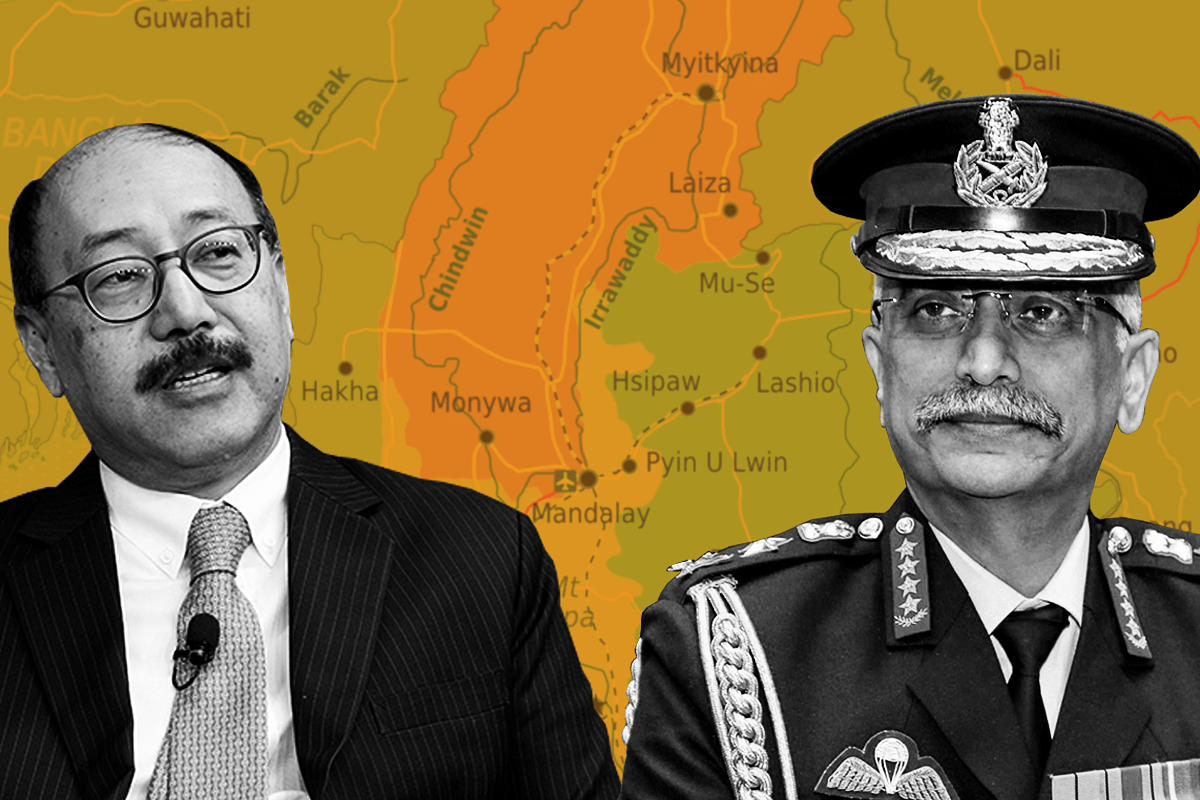World
This Is Why India’s Smart Outreach To Myanmar Marks A Milestone In Country’s Diplomacy
- This is the first time that the heads of India’s diplomatic and defence establishments undertook a joint visit to any country.

India’s foreign secretary Harsh Vardhan Shringla and army chief General Manoj Mukund Naravane
India’s foreign secretary Harsh Vardhan Shringla and army chief General Manoj Mukund Naravane have just returned from a successful two-day ‘historic’ visit to Myanmar.
‘Historic’ because this is the first time that the heads of India’s diplomatic and defence establishments undertook a joint visit to any country. And this joint visit represents a paradigm shift in the thinking and approach of the Ministry of External Affairs (MEA).
The decision to send the duo to Myanmar reflected pragmatism on part of the MEA, which acknowledged the ground realities prevailing in Myanmar where the army and the civilian administration share power.
Thus, Shringla and Naravane called upon Myanmar State Counsellor Aung San Suu Kyi, who is the de-facto head of the civilian administration, and the chief of the ‘Tatmadaw’ (as Myanmar’s military is called), Senior General Min Aung Hlaing.
The whole idea behind sending the foreign secretary and army chief to Myanmar was to give out a strong signal to the neighbour’s military and civilian leadership that India is keen on engaging with both on an equal basis.
That signalling was important since Myanmar’s military has often been criticised by many countries, especially in the West, as a power grabber.
India's gesture of according importance and respect to Myanmar’s generals has been deeply appreciated by the Tatmadaw, which shares power constitutionally with the civilian administration led by Aung San Suu Kyi’s National League for Democracy (NLD).
The NLD is expected to return to power in next month’s elections in that country. The meeting with the NLD chief on the eve of the elections also sent a strong message to Myanmar about New Delhi’s long-term commitment to cementing ties between the two countries.
The two-day visit by the Shringla-Naravane duo was, by all yardsticks, a successful one. India’s offer to set up a six billion dollar petroleum refinery in Myanmar was accepted by that country.
This will be India’s maiden foray into Myanmar’s energy sector which has, so far, been dominated by China which accounts for seventy percent of foreign investments in that sector.
A major part of the bilateral discussions centred around security along the 1640-kilometer India-Myanmar border.
A few insurgent outfits belonging to India’s Northeast had set up camps in the jungles of Myanmar near the international border. The Tatmadaw had busted these camps and had handed over 22 insurgents to India earlier this year, a move that has been deeply appreciated by New Delhi.
But India wants the Tatmadaw to keep up its vigil. The two sides agreed to deepen military-to-military ties between the two countries. India has offered to supply some military equipment, offer training, and help in vital capacity-building to the Tatmadaw.
The two sides upgraded a programme under which India would provide equipment, inputs, and expertise to enhance farm productivity in some areas of Myanmar, including the restive Rakhine province.
India and Myanmar also discussed the issue of repatriation of Rohingya refugees from India and Bangladesh to Myanmar.
The Indian delegation offered suggestions on making the repatriation process easy and impressed upon Myanmar to work closely with Bangladesh on this.
India has promised Bangladesh to leverage its (New Delhi’s) good ties with Myanmar to facilitate the return of the estimated 11 lakh Rohingyas in Bangladesh.
The status of two mega projects- Kaladan Multi-Modal Transit Transport Project and the India-Myanmar-Thailand Trilateral Highway--was reviewed. Myanmar committed itself to ease out all bottlenecks to hasten the pace of work on the two projects that are crucial to Prime Minister Modi’s ‘Act East’ and “Neighbourhood First’ policies.
The two sides also held preliminary discussions on a possible time table for high-level visits between the two countries after the elections in November. Aung San Suu Kyi is said to be keen on visiting New Delhi early next year.
Suu Kyi last visited India in October 2016. Modi had visited Myanmar in September 2017. Visits by both the leaders to each others’ countries is due and will be scheduled after the pandemic is over.
Support Swarajya's 50 Ground Reports Project & Sponsor A Story
Every general election Swarajya does a 50 ground reports project.
Aimed only at serious readers and those who appreciate the nuances of political undercurrents, the project provides a sense of India's electoral landscape. As you know, these reports are produced after considerable investment of travel, time and effort on the ground.
This time too we've kicked off the project in style and have covered over 30 constituencies already. If you're someone who appreciates such work and have enjoyed our coverage please consider sponsoring a ground report for just Rs 2999 to Rs 19,999 - it goes a long way in helping us produce more quality reportage.
You can also back this project by becoming a subscriber for as little as Rs 999 - so do click on this links and choose a plan that suits you and back us.
Click below to contribute.
Latest